E-commerce lost to physical stores accounted for less than 30% of sales
Despite the fact that the emergence of online video has had a great impact on traditional television programs, televisions, one of the broadcast carriers, are still essential products in every family. After a busy day of work, returning home to a TV and watching online videos or TV shows is a way to relax and relax. So, what are the concerns of the TV industry in the past 2015?

Recently, Ovid Cloud (AVC) announced the 2015 domestic TV market big data. This includes a lot of content that everyone is very concerned about, such as what size of TV is the most popular? What is the popularity of 4K ultra-high-definition TV? What kind of applications in smart TV are most favored by users? Not much to say, this week's "Home Appliances Big Data" issue 35, we come together to reveal the 2015 domestic TV market.
â– Less than 30% of e-commerce sales to physical stores
Let's look at a group of 2015 aggregated data. In 2015, global TV shipments were 230 million units, a decrease of 2.5 percentage points from the same period of last year. Despite the sluggish global shipments of the TV market, the domestic market is thriving. According to big data, the total domestic TV retail sales in 2015 was 46.74 million units, which was a year-on-year increase of 4.8 percentage points compared to 2014.
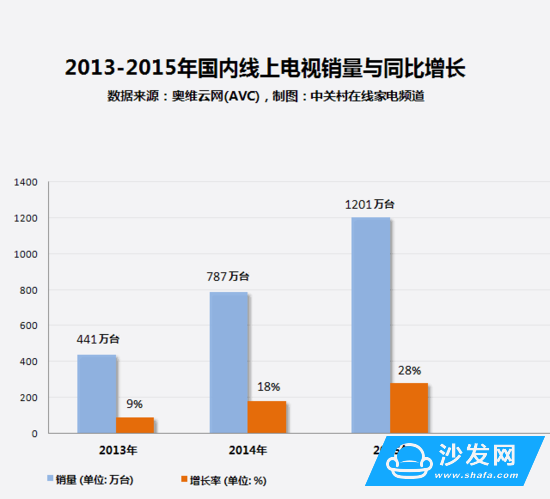
In recent years, the number of online TV sales has increased, but its share is only 18%, which is less than offline channels.
For users who purchase TV, under normal circumstances, two different channels, online and offline, can be selected. Users who are accustomed to online shopping can easily wait for the courier to deliver the TV to their homes, eliminating the hassle of going shopping around. Next, let's take a look at how many users have purchased TVs from online power suppliers in recent years. According to big data, in 2013, the number of domestic online sales of television was 4.41 million units, and the online market share was 9%; in 2014, the number of online sales of television was 7.87 million units, and the online market share was 18%; 2015 The number of online sales of television is 1,201 million, and the proportion of online market share is 28%.

Like functions like somatosensory games, users still want to be able to experience it first-hand
Why does online shopping account for less than 30% of TV users?
From the above data, it can be seen that the share of online TV sales in 2013 was less than 10%, only 9%, and by 2014, the share of online TV sales increased to 18%, and by 2015 it had reached 28%. %. In other words, currently about 30% of users choose to buy TV online. More consumers still choose to buy TVs in physical stores. In fact, the reason is not complicated. Nowadays, many functions of smart TVs are expected to be experienced by users. For example, many smart TVs support somatosensory game functions. These functions are difficult to experience on the e-commerce platform. For another example, what is the viewing effect of the built-in genuine video-on-demand platform on TV? Can you search for your favorite video program content, which is not possible in online e-commerce? Therefore, for the moment, TV sales in offline stores are hardly overtaken by online platforms in a short period of time.
Small screen hot-selling Internet TV lost to traditional brands
â– Smart TV has more than ten million audio and video apps
As we all know, the current popularity of smart TVs is getting higher and higher, and it has become the first choice for many users. According to the big data provided by AVC, it shows that in 2015, the cumulative number of smart TVs in the domestic TV market has reached 10.5 million units. In terms of penetration rate, it reached 73%. This figure can be said to have a good performance for the domestic TV market. In fact, the same as the computer needs software support, smart TV also needs a variety of APP client support in order to achieve a variety of functions.

Smart TV various APP arrival rate
Since smart TVs are highly favored by users, which APPs are most attractive to users? According to the analysis of big data, taking the statistics for December 2015 as an example, the rate of attainment of audio-visual APP is 68.3%, and the rate of educational APP reaches. In 1.1%, the game-type APP reached a rate of 7.3%, the living APP reached a rate of 10.8%, and the APP-approved rate of tools was 12.6%. It should be noted that the arrival rate mentioned here is the result of dividing the number of APP users by the number of APP users. It can be seen that the TV APP that is most favored by users is an audio-visual APP. This shows that the number of users watching video programs using smart TVs is the largest, accounting for more than 60% of the total.
â– Small screen is best to sell 42-43 inches and 55 inches
In general, consumers choose TVs based on the size of their living room or bedroom. Next, let's look at which sizes of TVs are more popular in mid-2015. According to big data, 32-inch TV sales accounted for 22.2%; 39-inch and 40-inch TVs, sales accounted for 13.6%; 42-inch and 43-inch TVs accounted for 17%; 46-inch and 48-inch TVs accounted for sales. The ratio was 6.3%; sales of 47-inch and 49-inch TVs accounted for 6.8%; sales of 50-inch TVs accounted for 11.6%; sales of 55-inch TVs accounted for 15.5%; sales of 58-inch TVs accounted for 1.7%; 60 inches. TV sales accounted for 1.8%; 65-inch TV sales accounted for 2%.
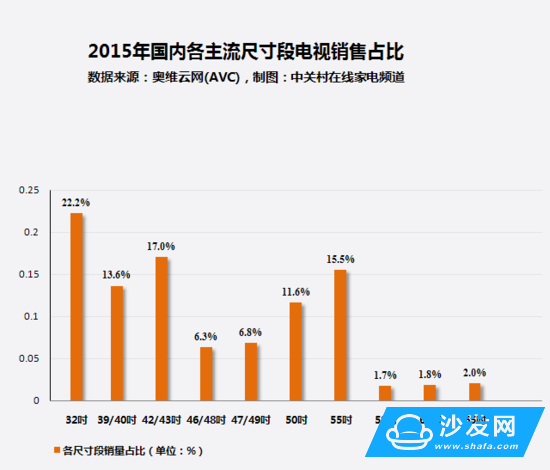
The proportion of domestic TV sales in various segments in 2015
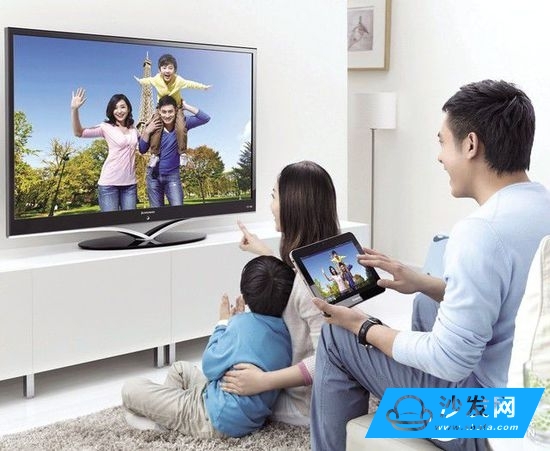
Big-screen TV market development prospects are optimistic
From this set of data, it can be seen that the current mainstream size segments in the top three are 32 inches, 42/43 inches, and 55 inches. The three sizes can be understood as small screens, medium screens and large screens, of which 32 inches are suitable for use in small living rooms or bedroom spaces, 42 and 43 inches TVs are suitable for medium-sized living rooms, and 55 inches are suitable for larger areas. Living room space.
â– Internet TV accounts for 10% of domestic traditional TV manufacturers still dominate
In recent years, Internet TV has become more and more popular. The joining of many Internet TV manufacturers has made the smart TV market more lively. Fierce competition makes Internet TV stand out, has a great advantage in terms of price, and is rich in built-in video. This is one of the reasons why many users choose Internet TV. According to big data, in 2015, the market share of Internet TV brands was 10%, the market share of domestic traditional brands was 77%, the market share of Korean brands was 6%, and the market share of Japanese brands was 7%.
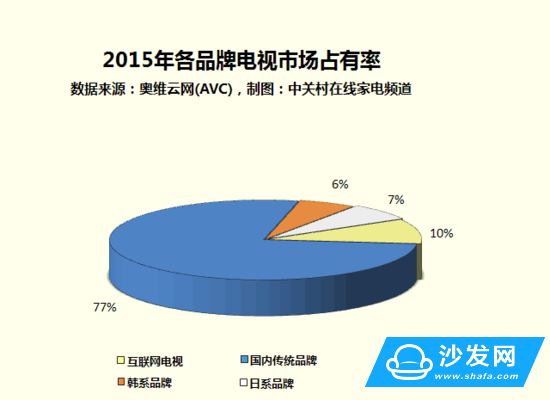
The status of traditional TV makers is still difficult to shake
Although the statistics show that the share of Internet TV in 2015 was only 10%, compared to the same period in 2014, the Internet TV usage has increased by 5 percentage points. This means that Internet TV represented by millet, LeTV, PPTV, Storm TV, etc. still has a vast market, and the future development prospects are also worthy of recognition.
The prospect of the rural market surrounding the city cannot be underestimated
â– The prospect of rural areas surrounding the city cannot be underestimated
The phrase “rural encirclement of the city†comes from the great leader Mao Zedong who admired the people throughout the country. Now it is appropriate to use this phrase to describe the 2015 TV market. According to big data, in the TV market in 2015, rural sales accounted for 51%, and urban sales accounted for 49%.
Urban VS rural television average size
In the past, in the impression of everyone, the demand for buying in the rural market was not high, but the reality was not the case. In recent years, with the continuous improvement of farmers' income and living standards, the purchasing power of the rural market has also been gradually stimulated. Therefore, the demand for rural products coincides with that of cities, and there has been a tendency to gradually converge. Specifically, in terms of average size, the city’s average sales size is 44.8 inches, and the rural average size is 44.2 inches. The gap between the two is only 0.6 inches.
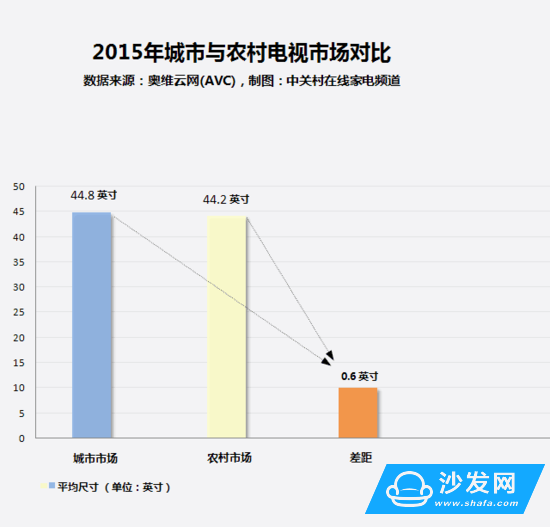
In the rural and urban markets, the average TV size difference is only 0.6 inches
City VS rural smart TV penetration
In the penetration rate of smart TVs, in the urban market, smart TV penetration rate is 72.6%, rural smart TV penetration rate is 73.3%, and the rural market is even 0.7% higher than the urban market.
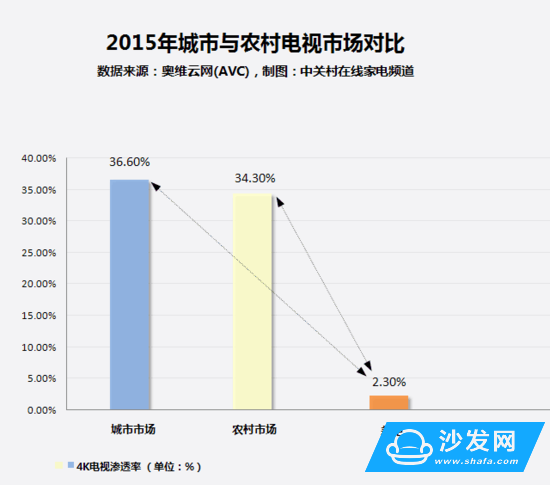
The penetration rate of 4K ultra-high-definition television in urban TV market is 2.3% higher than that in rural areas
â– Urban VS rural 4K TV penetration rate
In the penetration rate of 4K ultra-high-definition TV, the penetration rate of ultra high-definition television in the urban market was 36.6%, and the penetration rate of ultra-high-definition television in rural TV market was 34.3%. The difference between the two is 2.3 percentage points.
In terms of smart TV penetration, the rural market is 0.7% ahead of the urban market
The author's opinion that manufacturers should pay more attention to the rural market
It can be seen that the rural TV market has not been underestimated at present and there have been many changes in the purchasing power of consumers. Even the penetration of smart TVs is slightly higher than the urban TV market. For current TV makers at home and abroad, the current business strategy should also be changed. Do not just focus on the first and second-tier cities. The potential of the rural market can not be underestimated. Manufacturers can target the rural market, refine product functions, meet the demands of rural users, and launch products that are more suitable for the market. Well, this week's home appliance big data has come to an end, see you next week.
Portable Wireless Speaker,Mini Wireless Speaker,Custom Bluetooth Wireless Speaker,Waterproof bluetooth speaker,Wholesale bluetooth speakers
Shenzhen Konchang Electronic Technology Co.,Ltd , https://www.eclinusb.com